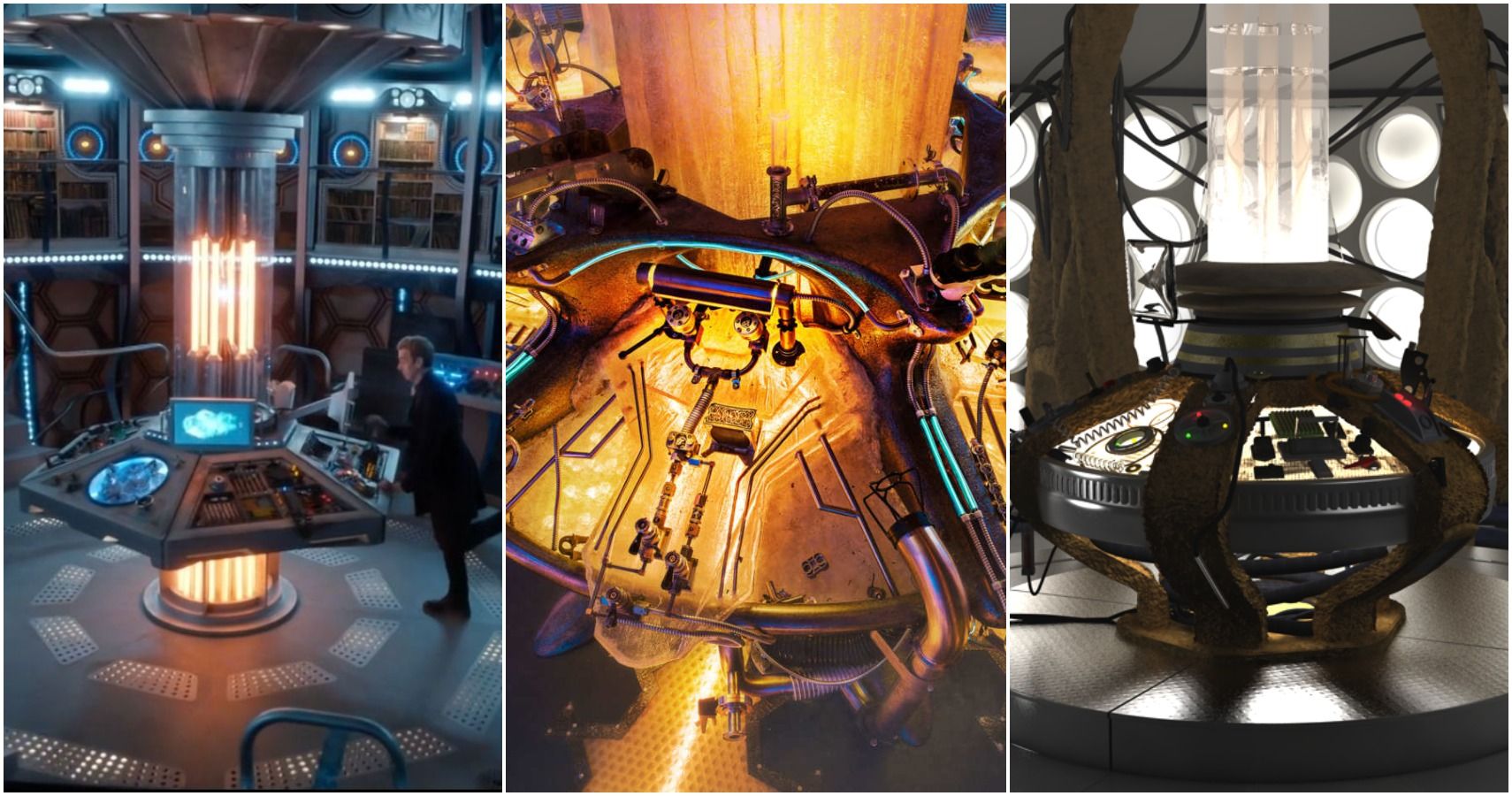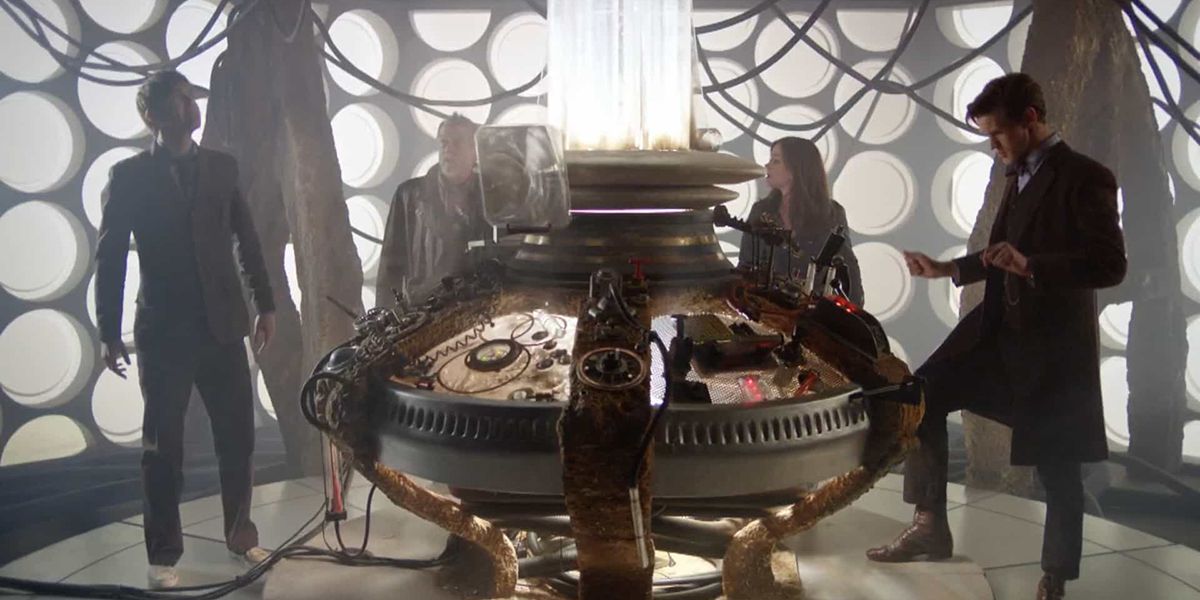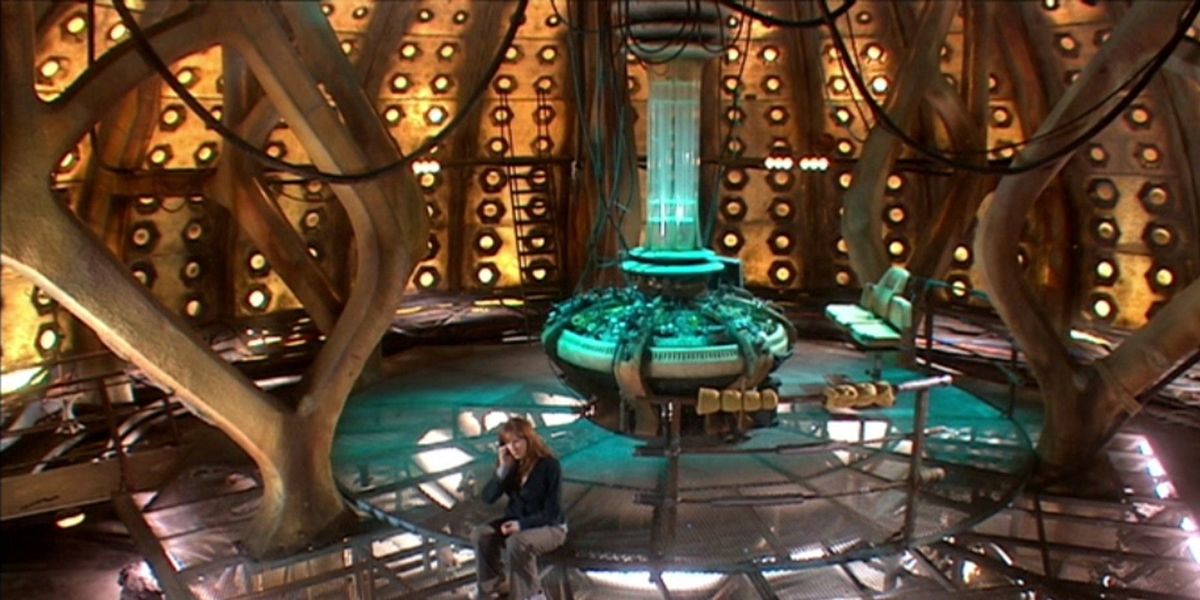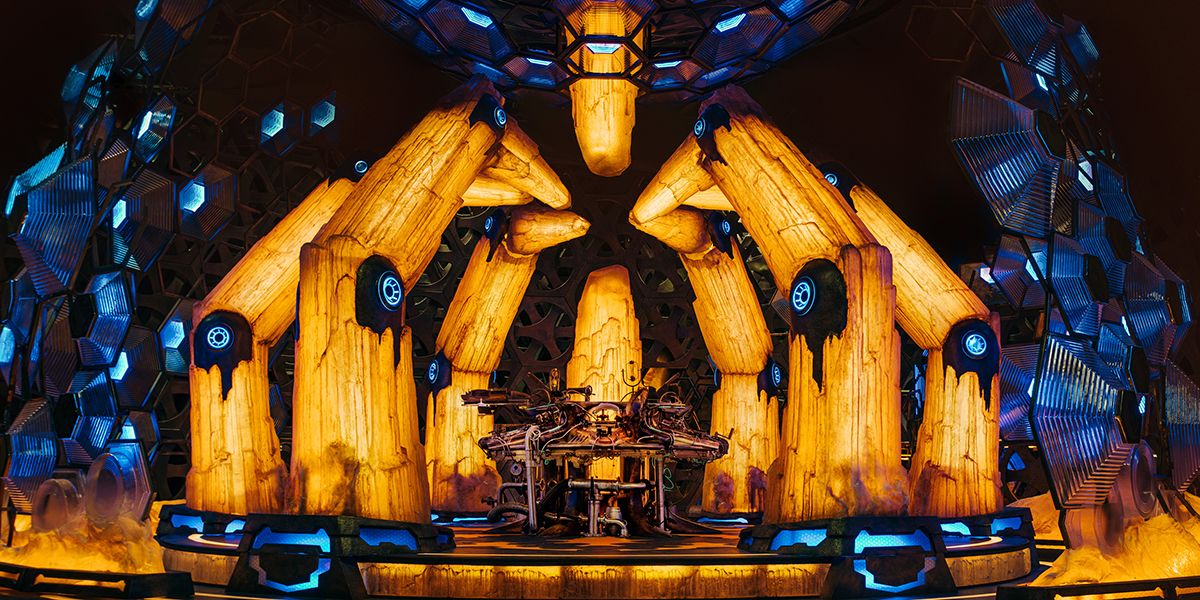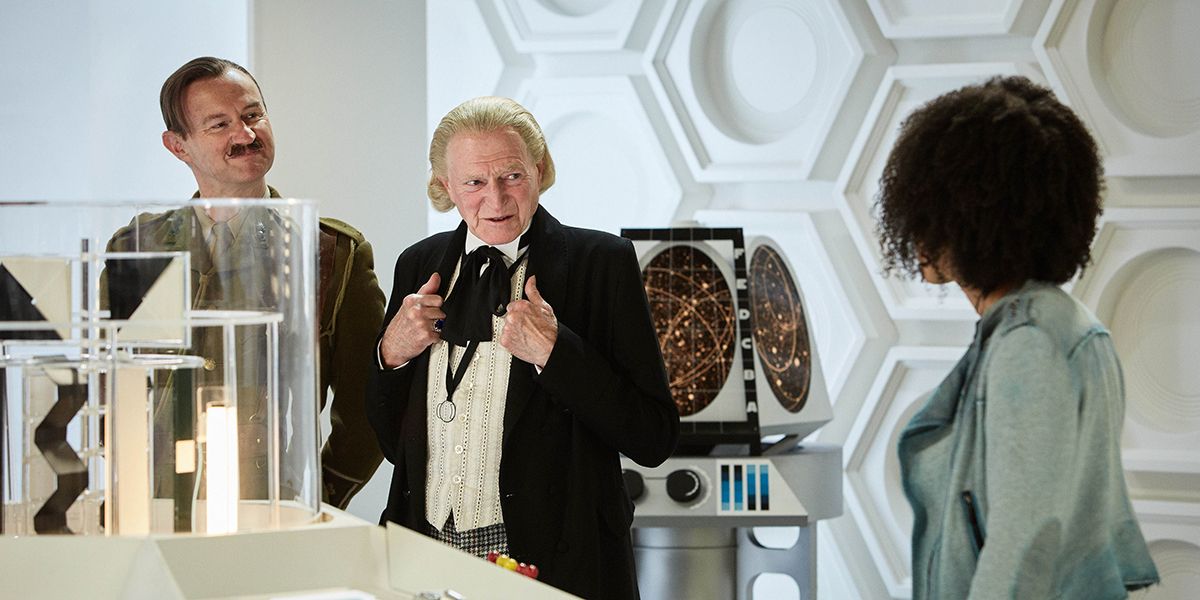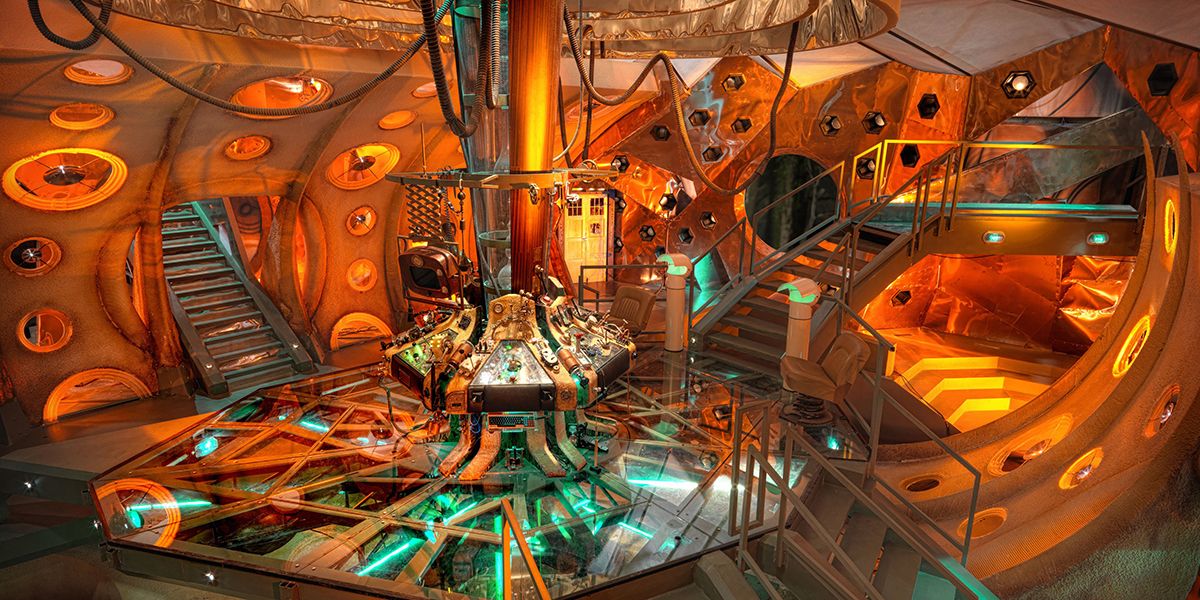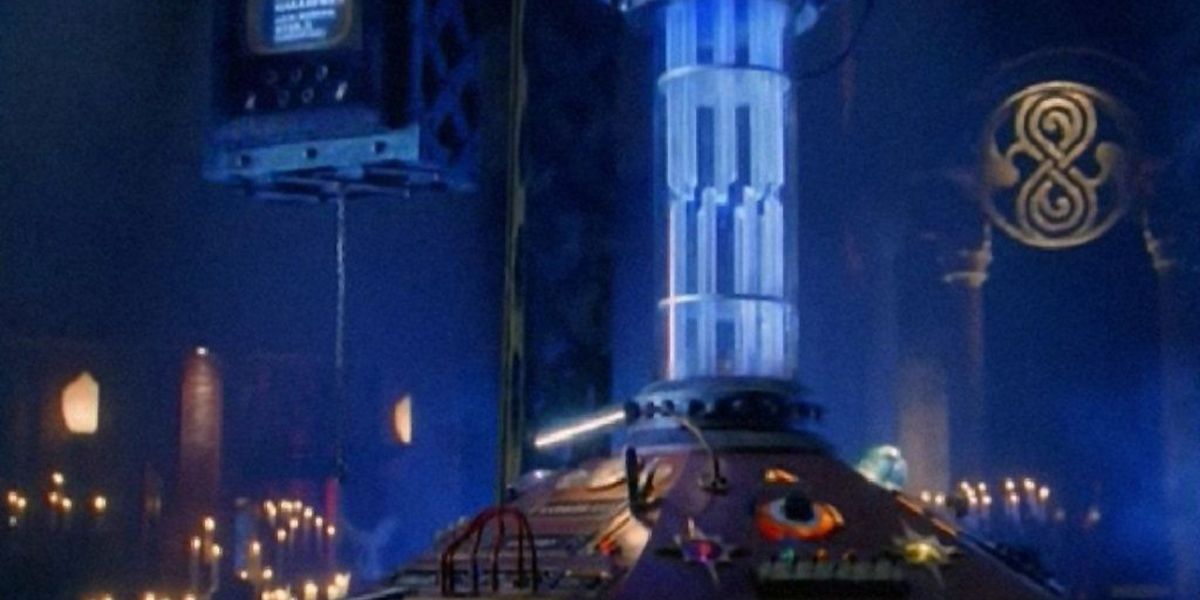For the most part of its original run, Doctor Who kept the TARDIS recognizable with a sleek, minimalist white interior control room as a contrast to the blue police call box it appeared to be outside. We got to explore backup control rooms and even the companions’ bedrooms from time to time, but the “desktop” remained tried and true until the 1997 television film appropriately also titled Doctor Who.
When Doctor Who was revived in 2005, it meant the TARDIS was in need of a makeover. Now, over a decade and a half later, the TARDIS has gone through four different remodels in the time since Rose Tyler first ran through the TARDIS doors to find a room impossibly bigger on the inside than the outside. The Doctor themselves may not always appreciate redecorating, but since we do, we thought now is a better time than ever to rank the various control rooms in Doctor Who history.
War Doctor’s TARDIS
Only seen in the 50th Anniversary special “Day of the Doctor,” the War Doctor's TARDIS was a perfect blend of past and future. Featuring the stark white interior used for the entirety of the classic series with the strangely organic-looking columns from the Ninth and Tenth Doctor’s TARDIS (as well as, yes, the round panels on the wall), the War Doctor (John Hurt) was certainly riding around in style.
However, it's short appearance wasn't enough for us to form any kind of attachment to the design, so it ranks pretty low on our list.
Ninth and Tenth Doctors’ TARDIS
Introduced in 2005 and used until 2009 when the Doctor accidentally blew it up with regeneration energy, the Ninth and Tenth Doctor’s TARDIS felt alien, gritty, and grounded: a perfect representation of Russell T. Davies’ era of Who.
This TARDIS began as a dimly lit alien castle that remained in deep emerald hues until gradually over the years, the lighting became more neutral and brighter. It feels like a well-loved home that is neither show-offy or too simple. It feels like a place where we could sit and talk with the Doctor for hours like his companions would. While we have fond memories of this TARDIS, the interior's grunge-like design has lost a lot of its initial appeal.
Thirteenth Doctor’s TARDIS
An entire season later, we're still not sure what to make of the Thirteenth Doctor's TARDIS. It's obviously meant to visually complement her Sonic Screwdriver, so the columns mirror the strangely alien crystal at the core of the Sonic.
However, the design is strangely flat. It feels like an unfinished piece, with most of the control room empty until you reach the back where the central counsel is. Perhaps it's just us, but more so than any other design, onscreen this TARDIS feels like a set piece than an alien wonderland we want to get lost in.
What is particularly frustrating is that, as proven with the episode “Spyfall Part II," the design is massively improved by changing the lighting from the columns from a cherry white to a more alien blue. It makes the entire set feel different, otherworldly, and we wish we could see it like that more often.
Classic TARDIS
Sleek, modern, minimalist — the original TARDIS is a classic. Like Thirteen's TARDIS, it has a mostly flat design but this one works. More often than not, the usually clean and empty control room has chairs or clothes thrown about, reminding us that there are people living on this incredible spaceship.
The design brings us a comfortingly simplistic TARDIS, one that held the hearts of millions for decades.
Eleventh Doctor's TARDIS
When it came time for the Tenth Doctor to leave, it brought about many changes behind the scenes. The entire series got a shake-up with an entirely new cast and a new showrunner, Steven Moffat. So when the Eleventh Doctor came crashing into our television screens, it meant saying goodbye to the TARDIS we'd come to know and love and falling in love with the new design.
The Eleventh Doctor's TARDIS feels like a wonderland, a madman’s laboratory, and a home all at once, which we suspect was the intent. It has many different levels and platforms, its control panel is a hodgepodge of different tools and tech pulled together that somehow makes the TARDIS work, and it's warm. It's lit well, with orange panels that make the overall vibe feel welcoming if a bit alien.
Eleventh and Twelfth Doctor’s TARDIS
After he lost Amy and Rory in “The Angels Take Manhattan,” the Doctor shut himself off from the universe. Broken from the loss of yet another family, he became bitter, believing the universe didn't care anymore — so he wouldn't either. Self-imposing an exile in the TARDIS on a cloud over Victorian London, the Doctor was definitely succeeding at his best Scrooge impression in “The Snowmen.”
As we learn when the Doctor finally shows Clara the interior of the TARDIS, sometime between the two episodes he redecorated. While we're ooh-ing and ah-ing over the new look, Clara observes that it's smaller on the outside (officially sealing our love for her, let's be honest).
The new design is colder and more metallic than previous designs in the new series and is much more scaled down while retaining several levels such as the primary floor, a deck above filled with bookshelves, and underneath the counsel where the Doctor has a swing where he does repairs. This TARDIS was revamped slightly when Matt Smith left and Peter Capaldi took over by changing out the blue hues for warmer oranges while retaining the overall design. It's easily one of our favorites and holds a special place in our hearts.
The Eighth Doctor’s TARDIS
Steampunk to the max. Meant as a pilot for a revival, the 1997 television film saw Sylvester McCoy reprise his role as the Doctor long enough to give us a rundown of the Doctor’s current duties (delivering the Master back to Gallifrey) and then die, quite violently.
However, his regeneration would prove more complicated than usual by having an ambulance called for his injuries. Several hours later, the Doctor wakes up in a morgue having been pronounced dead — now portrayed by Paul McGann (technically the longest-running actor to portray the Doctor in terms of his first appearance to his regeneration in the 2013 minisode “Night of the Doctor”).
What really interests us about the film is the Doctor’s TARDIS. There's nothing simple or minimalist about this one, no sir. It's vast, it is a massive cathedral of weirdness, a strange combination of a spaceship and a study slash library. The central counsel is lit in a beautiful blue light, with an open ceiling that projects the scenery outside. Elsewhere is covered with bookshelves, record players, and comfy armchairs. Hands down, this is the best TARDIS design to date. If we had to choose a TARDIS to live in, it would be this one.

